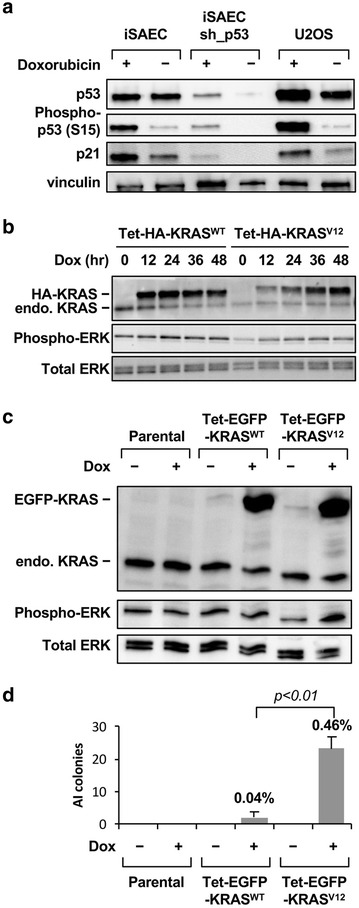Fig. 4.

Response of iSAECs to p53 activation and KRAS oncogene transformation. a Induction of p53 by DNA damage in iSAECs. iSAECs with or without stable expression of a p53 shRNA (sh_p53) were treated for 24 h with 200 nM doxorubicin and phospho-p53 (Ser15) and p21 levels were measured by western blot. The p53 WT U2OS cells were included as a positive control. b Expression of tetracyclin (tet)-inducible HA-tagged KRASWT and KRASV12 proteins in iSAECs. iSAECs stably expressing KRAS cDNA were treated with 100 ng/ml doxycycline for various periods of time and the level of KRAS and phospho-ERK (Thr202/T204) protein were measured. c Expression of tetracyclin (tet)-inducible EGFP-tagged KRASWT and KRASV12 proteins in iSAECs. iSAECs stably expressing inducible KRAS cDNA were treated with 100 ng/ml doxycycline for 2 days and the level of KRAS and phospho-ERK protein were measured. d Soft agarose anchorage-independent (AI) colony assay of iSAECs cells following induction of EGFP-KRASWT and EGFP-KRASV12 proteins. 5000 iSAECs were seeded in soft-agarose media with or without 100 ng/ml doxycycline and the colony numbers were counted 16 days later. The percentage values above each bar graph indicate clonogenic efficiency as a % of the total number of cells seeded
